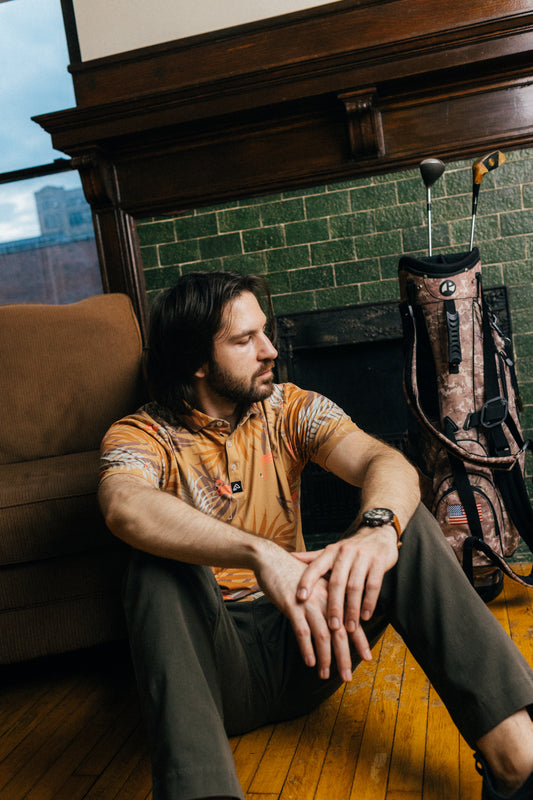
#33 Mastering the Backswing: Driver vs. Irons
Share
What Every Golfer Needs to Know About Backswings
The backswing is one of the most crucial components of a great golf swing, but did you know that the backswing for a driver and irons should not be identical? Many golfers make the mistake of using the same motion for both, only to find themselves topping the ball, hitting weak shots, or losing consistency.
In this blog, we’ll break down the key differences between the driver and iron backswing, helping you optimize each swing for better distance, accuracy, and consistency.
Understanding the Fundamentals of a Backswing
Before diving into the differences, let’s quickly go over what a good backswing should accomplish:
✅ Creates power by loading your body correctly.
✅ Sets up the downswing for an optimal strike.
✅ Maintains balance and rhythm to ensure consistency.
Now, let’s compare how this applies to drivers vs. irons.
Backswing for the Driver
Key Objective: Maximize power and launch angle for distance.
The driver is the longest club in the bag and is designed to launch the ball high with low spin. To achieve this, your backswing should focus on creating width, a full turn, and a shallow approach into the ball.
1. Widen Your Arc
- The driver swing requires a wider backswing to generate speed.
- Your hands should feel like they’re reaching far away from your body at the top of the backswing.
2. Full Shoulder Turn
- Rotate your shoulders at least 90 degrees while keeping your lower body stable.
- This allows for more power to be stored in your coil.
3. Keep the Club Shallow
- The driver should approach the ball on a slightly upward angle (attack angle = positive).
- A too-steep backswing can lead to pop-ups or slices.
4. Keep Weight Balanced
- Avoid swaying back; instead, feel like you’re coiling around your trail leg (right leg for right-handed golfers).
- A slight tilt of the spine away from the target at the top helps promote an upward attack angle.
Backswing for Irons
Key Objective: Precision, control, and a downward strike on the ball.
Unlike the driver, irons are meant to hit the ball with a descending blow to compress it against the turf. This means your backswing needs to be more compact and controlled.
1. Tighter Swing Arc
- With irons, your hands don’t need to be as far away from your body at the top.
- A slightly narrower swing arc leads to better control over ball striking.
2. Steeper Plane
- The club should work more vertically compared to a driver.
- A steeper backswing helps promote a crisp, downward strike on the ball.
3. More Centered Weight Distribution
- You don’t need as much weight shift compared to a driver.
- Feel like your weight stays centered rather than swaying back.
4. Slightly Less Shoulder Turn
- A full shoulder turn is still important, but over-rotating can lead to inconsistency with irons.
- Focus on a solid wrist hinge at the top to help control the clubface.
Key Differences Between the Driver and Iron Backswing
| Aspect | Driver | Irons |
|---|---|---|
| Swing Arc | Wide and long | Compact and controlled |
| Shoulder Turn | Full 90-degree rotation | Slightly less than the driver |
| Club Path | Shallow, sweeping motion | Steeper, downward strike |
| Weight Shift | More shift to the trail side | More centered for control |
| Spine Tilt | Slightly tilted away from target | More neutral for ball compression |
Final Thoughts: The Right Backswing for the Right Shot
Understanding these differences between the driver and iron backswing can drastically improve your consistency on the course. The next time you step up to the ball, remember:
🏌️♂️ Driver = Big turn, wide arc, shallow approach for power.
🏌️♂️ Irons = Controlled turn, steeper angle, downward strike for precision.
By making these small but crucial adjustments, you'll start hitting longer, straighter drives and crisper, more accurate iron shots—leading to lower scores and more confidence on the course.
Now, go out and put these backswing tips into action! ⛳🔥
Keep swinging!
Dont be shy about sharing it with us! Tag & DM us on Instagram @easy.eagle










